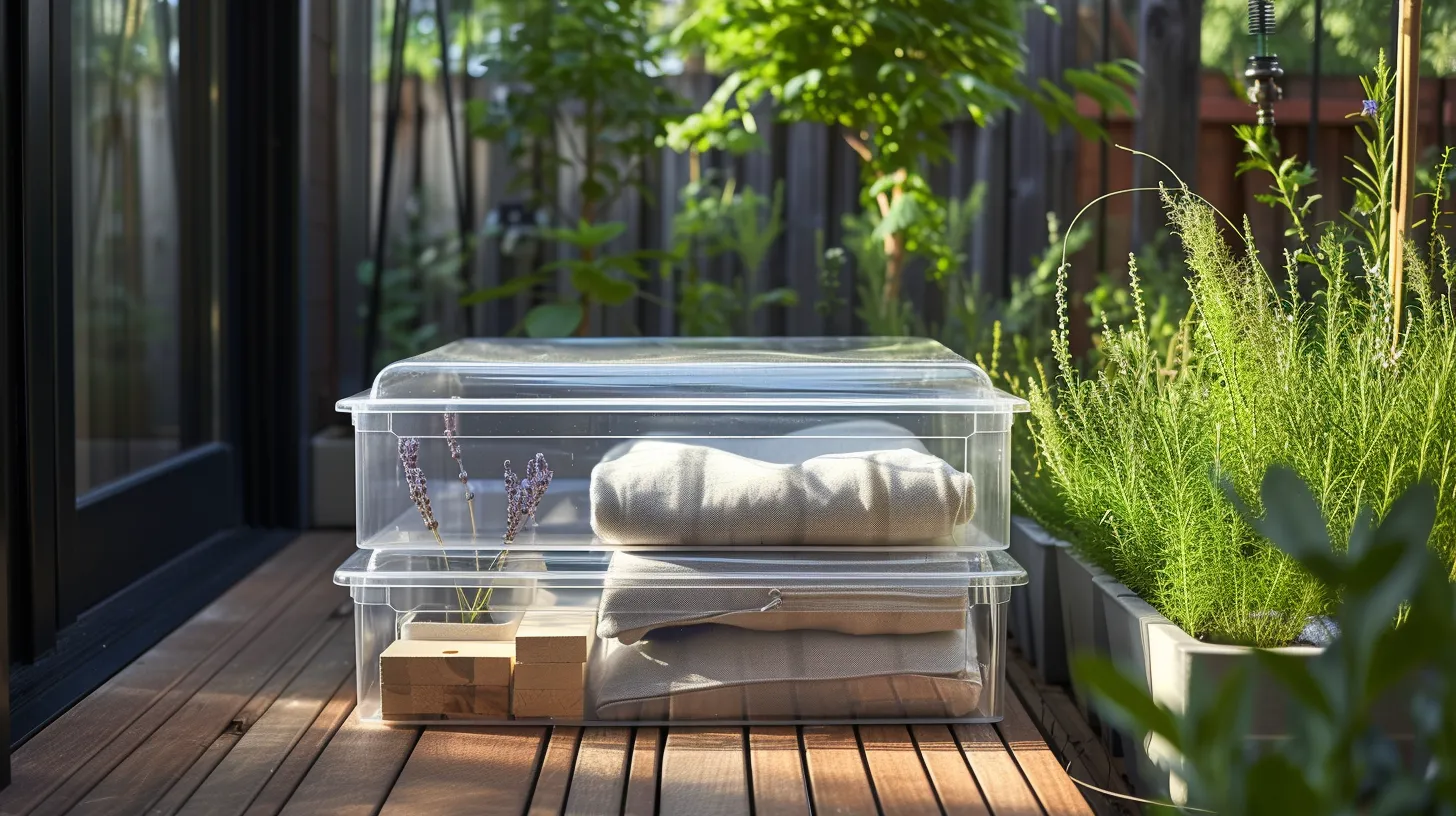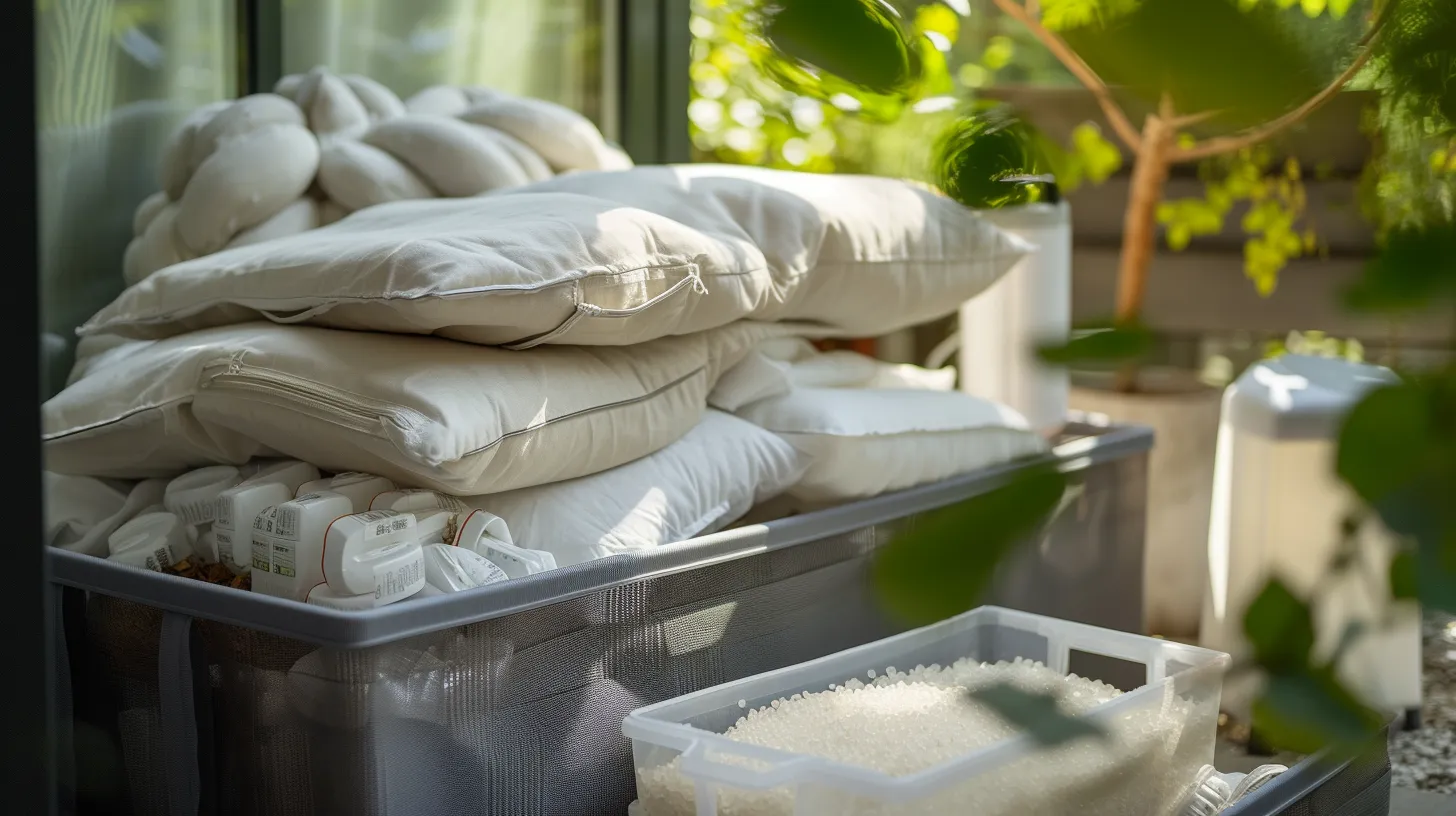The proper storage of outdoor cushions is an essential aspect of maintaining their longevity and aesthetic appeal, yet it often goes overlooked.
Before transitioning your outdoor living spaces for the changing seasons, it is critical to consider not just where, but how you store your cushions to protect them from damage, mold, and pests.
The process begins long before the cushions are placed into storage, with thorough cleaning and preparation playing a pivotal role in ensuring they remain in pristine condition.
Selecting the appropriate storage containers and identifying an ideal location are just as crucial, as these decisions can significantly impact the preservation of your cushions.
Furthermore, safeguarding these items from pests and conducting regular maintenance during their storage period are steps that cannot be ignored.
As we explore these aspects, it becomes apparent that the methods employed in storing outdoor cushions are as varied and nuanced as the cushions themselves, inviting a deeper exploration into the best practices that ensure their protection.
Cleaning and Preparation
Prior to storage, it is imperative to thoroughly clean and dry outdoor cushions to prevent mold growth and material degradation. The process of preparing outdoor cushions for storage begins with adhering to the manufacturer's cleaning instructions, which are tailored to the specific materials of the cushions.
For removable covers, machine washing is often recommended. In contrast, non-removable covers require a gentle scrubbing using a solution of soap and warm water to remove dirt and grime effectively.
For any stubborn stains or signs of mold and mildew, a cleaning mixture of white vinegar or a diluted bleach solution can be applied to target these problem areas, ensuring the cushions are left in pristine condition.
After cleaning, it is crucial to let the patio cushions air dry completely. Hastening this process or storing the cushions while they are still damp can lead to unwanted issues such as mold growth.
Selecting Storage Containers

Choosing the right storage container is crucial for maintaining the condition of your outdoor cushions during periods of non-use. The selection process should factor in the size and material of the cushions to ensure optimal protection. Here are key considerations for selecting the best storage options:
- Airtight Containers for Moisture and Pest Protection
- Plastic Bins: A great option for keeping cushions in airtight containers, ensuring no moisture or pests can damage them.
-
Deck Boxes: These are ideal for larger cushions, providing ample space and safeguarding against environmental elements.
-
Breathable Options for High Humidity Areas
- Fabric Storage Bags: Specifically designed for cushion storage, these allow air circulation, preventing mold and mildew in humid conditions.
- Storage Bench: Doubles as furniture and a storage solution, offering a practical and aesthetic way to store outdoor cushions.
Additionally, incorporating moisture-absorbing packets within these storage solutions can further protect cushions from dampness. It's important to store cushions in a dry, room-temperature area away from direct sunlight, regardless of the storage method chosen. Options like heavy-duty trash bags, though not ideal, can serve as a temporary solution for cushion storage.
Ideal Storage Locations

Having explored the various storage containers suitable for outdoor cushions, it's essential to consider the specific locations that offer the best conditions for their preservation. When deciding where to store patio furniture cushions, the paramount consideration should be a dry environment with consistent temperature and humidity levels. A finished basement or a climate-controlled storage unit emerges as ideal choices for storing cushions, as they provide protection from fluctuating conditions that could promote mold or mildew growth on your cushions.
To further ensure the longevity of your outdoor patio cushions, it's crucial to keep them away from direct sunlight and potential nesting areas for pests. Utilizing airtight containers, breathable fabric bags, or dedicated furniture cushion covers can significantly aid in preserving the quality of the cushions outside the peak season.
If a finished basement or climate-controlled unit is not available, a shed or garage can serve as an alternative storage location, provided that measures are taken to elevate the cushions off the ground and maintain some degree of climate control. This approach to storing outdoor cushions, attentively considering both the storage containers and locations, ensures the best care for your cushion covers and extends their usable life.
Protecting From Pests

To safeguard outdoor cushions from undesirable pests, it is imperative to store them in sealed containers or specially designed protective bags. This practice not only keeps the cushions dry and in great condition but also ensures that your patio furniture remains ready for use, maintaining its function and aesthetic appeal.
Here are steps to effectively protect your cushions:
- Preventive Measures:
- Use natural pest repellents like cedar chips or lavender sachets within the storage area to deter insects.
-
Regularly inspect the storage location for signs of pests and clean the cushions thoroughly to remove any food particles or attractants.
-
Storage Tips:
- Keep the cushions off the ground by storing them in a dry, elevated place. This simple act can significantly deter rodents and insects.
- Choose materials that are weather-resistant for your cushions and consider wrapping them with protective covers or tarps during harsh weather conditions.
Maintenance During Storage

After ensuring your outdoor cushions are protected from pests, the next critical step is to focus on their maintenance during storage to preserve their quality and longevity. It's important to know the best practices for keeping your cushions in pristine condition.
First, use airtight containers to safeguard against moisture and pests, which can be detrimental to the fabric and filling. Including moisture-absorbing packets within these containers is a good idea, especially if you live in an area with high humidity, to maintain the dryness of the cushions.
Storing your outdoor cushions at least six inches off the ground on a shelf to keep them dry and away from potential pest invasions is another effective strategy. For those with the resources, renting a climate-controlled storage unit or utilizing an interior closet can offer optimal conditions, protecting the cushions from extreme temperatures and direct sunlight, which can fade and damage the material over time.
Lastly, if feasible, plan ahead by bringing your cushions indoors overnight regularly to shield them from dew and pests. These steps will ensure your cushions stay in great shape throughout their storage period.










